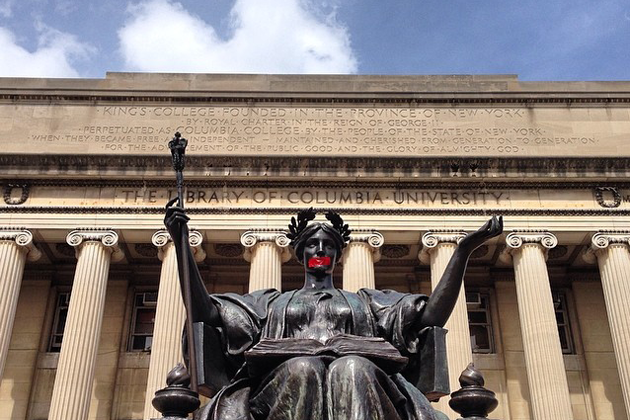
Responding to complaints about Columbia University’s failure to take sexual assault seriously, Columbia University President Lee Bollinger recently announced plans to make his campus safer for students and staff. As a member of the Columbia community, I wasn’t surprised to read that the culture of impunity which surrounds sexual violence is alive and well on my campus. Only a few weeks ago, one of my friends experienced this first hand. Someone, the same person, no less than three times in one of our library’s reading rooms, assaulted her. The day of Bollinger’s announcement, she left Columbia’s office for gender-based and sexual misconduct a voicemail message. Three weeks later, she had not heard a word. Nothing. On the other hand, she encounters the perpetrator at least three times a week.
While the topic of sexual violence receives increasing attention in many political and media arenas, many popular misconceptions, inactions and silences haunt this global epidemic. While prime responsibility to bring this violence to an end rests with political and institutional leadership, as public educators, media have a responsibility too. First, they could do a much better job framing sexual violence for what it is, namely a news worthy crime and a grave human rights violation. Second, they should also make perpetrators more visible. All too often we read about sexual violence as something that ‘overcomes’ women, as if this evil keeps happening without any actors.
The simple fact that sexual violence, as perpetrated by men doesn’t spare any class, nation or community, suggests that, rather rooted in culture or social class, the violence is entrenched in dominant meanings of manhood, also known as masculinities.
Masculinities lie at the very core of sexual violence, and yet the concept of masculinities is curiously and disturbingly under discussed in the media. To be sure, masculinities are complex and so not easy to cover. They take various shapes and forms in different contexts, and are embedded in the particular context in which a man makes sense of himself, his role models, his future and how he perceives the worth, role and place of women. One community’s nerd might be another one’s hero. Hence, the performances and manifestations of masculinities, including treatment of women, take different forms. But what underlies them all is an oppressive relationship to women. That is true everywhere, including the elite Ivy Leagues. That much is clear.
What seems less clear but is in desperate need of attention is how thin is the line between violent performances of masculinity and ostensibly innocent and typical ‘male behavior’. This silence keeps the culture of impunity around sexual violence intact. By affirming stereotypical ideas of dominant men and submissive women, and leaving unchallenged and undiscussed how ‘typical male traits’ relate to devastating violence against women, the media help fuel the violence.
This silence excuses men from critically rethinking their own masculinity and the role they play in condoning problematic masculine performances around them. As a result, the conversation around sexual violence is often reduced to one with ‘bad guys’ and ‘good guys’, in which the good guys are able to distance themselves from the verbal or physical misogyny of the ‘bad ones’, while hailing ‘girl power’ and gender equality. Such hollow equality rhetoric, however, does little for illuminating, critically examining and challenging how fellow men condone, perform, fuel or normalize the masculine ideas that are rooted in the same patriarchal structure as the physical assaults.
“Typical male behavior” is covered in such a thick guise of “common sense normality”, that it is often defended as innocent, unworthy of serious analytical scrutiny and not related to “serious” power issues nor to misogyny. The innocent little slights and the big physical violence share a foundation of patriarchy and male entitlement. It’s when he gets offended by being called gay; when he gently slaps a colleague on her butt; when he insists on getting her that tequila, even though she declined; when he expects her to clean up; when he assumes he will be the leader in his team of female students; when he laughingly takes her no for a yes in the bedroom; when he tells her to put a smile on her pretty face, even though their passing each other in traffic is the first time they ever met (It’s a compliment entitlement!).
In challenging problematic masculinities, the media have a vital role to play.
The prime responsibility to tackle sexual violence, however, lies with the institutions and leaders who should prosecute and punish the perpetrators. In the context of college campuses, President Obama recently, and correctly, pointed out that university presidents ought to take responsibility here. With regards to Columbia, it looks like the students will hold their President to account. With placards across campus restrooms, Columbia’s No Red Tape Community is currently calling on Bollinger to follow up on his promises and provide clarity about the town hall meetings. With regards to my friend, not too long after Bollinger’s announcement, the office for gender-based and sexual misconduct finally called her back. Efforts are under way to track the perpetrator. While this is a positive signal, only time will tell whether Columbia will strengthen their work in a structural way.
(Photo Credit: Erin Vaughn / Instagram / ProPublica)



